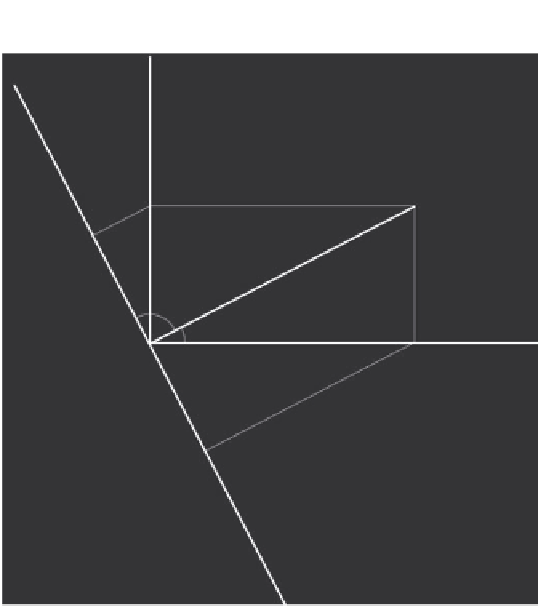Chemistry Reference
In-Depth Information
n
α
of the section
y
P
p'
π/2
α
O
n
γ
of the section
x
p''
Figure 2.7
Plate with parallel faces: (lower) polariser and analyser at right angle.
or by posing d
=
e
δ
=
e(n
γ
−
n
α
)
a
2
sin
2
2
α
sin
2
(
π
d/
λ
)
, that
is to say the color. The incident light is white light; we must thus integrate
the intensity over the range of wavelengths:
The intensity of the emerging beams depends on the wavelength
λ
I
=
∫
λ
I
λ
is larger. The observed coloration is the sum of the colors obtained for each
λ
For each wavelength, the curve I
is a sinusoid all the more spread that
λ
λ
) constant. In function of d, we obtain a wide range of
colors known as the
Michel-Lévy interference color chart:
The chart is divided into several
orders
by boundaries corresponding to val-
ues of
at d
=
e (n
γ
−
n
α
) equal to a multiple of 0,018 (for a thickness of 30 microm-
eters). At such thickness, colors corresponding to these boundaries are purple/
δ
=
e(n
γ
−
n
α





























